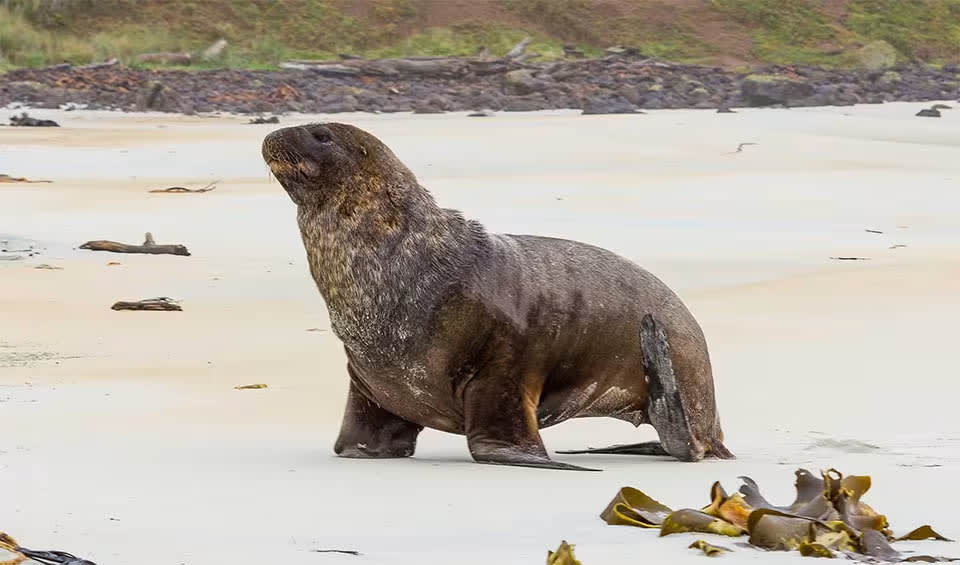The New Zealand Sea Lion, also known as the Hooker’s Sea Lion, is a critically endangered pinniped native to New Zealand, and it stands out as one of the most threatened sea lion species globally. With distinctive physical characteristics and a limited distribution, this species plays a significant role in New Zealand’s marine biodiversity.
The New Zealand Sea Lion exhibits notable sexual dimorphism in size and coloration. Males are larger and possess a dark blackish-brown coat with a prominent, well-defined mane around their shoulders, contributing to their imposing appearance. In contrast, females are smaller and have a light grey coat with darker shades around the flippers, providing camouflage in their coastal habitat. Newborn pups are initially covered in dark brown natal pelage, which changes to dark grey with distinctive cream markings on the top of their head as they mature. The species’ short, blunt head is a unique feature distinguishing the New Zealand Sea Lion from other sea lion species.
This sea lion’s breeding population is concentrated in the subantarctic Auckland Islands, with smaller populations on Campbell Island and the Otago and Southland coasts of New Zealand’s South Island. These locations provide critical habitat for breeding, foraging, and resting. The species’ fidelity to specific breeding sites is a key aspect of its biology, but it also makes the population vulnerable to localized threats.
Listed as endangered by the International Union for Conservation of Nature (IUCN), the New Zealand Sea Lion faces several significant threats. Bycatch in commercial fisheries, particularly in squid trawl fisheries, is a major cause of mortality for these sea lions. Food limitation, resulting from competition with commercial fisheries and changes in prey availability due to climate change, further exacerbates their struggle for survival. Disease outbreaks, subsistence hunting, and historical commercial sealing have also contributed to the decline in their numbers.
Distribution
 Pacific ocean
Pacific ocean Australia
Australia New Zealand
New Zealand Official estimate
Official estimate
Anything we've missed?
Help us improve this page by suggesting edits. Glory never dies!
Suggest an editGet to know me
Terrestrial / Aquatic
Altricial / Precocial
Polygamous / Monogamous
Dimorphic (size) / Monomorphic
Active: Diurnal / Nocturnal
Social behavior: Solitary / Pack / Herd / Group
Diet: Carnivore / Herbivore / Omnivore / Piscivorous / Insectivore
Migratory: Yes / No
Domesticated: Yes / No
Dangerous: Yes / No




